Physical Activity Guidelines for Older Adults
Physical activity is crucial for maintaining overall health, especially for older adults. It is recommended that older adults engage in some type of physical activity every day to improve their health and reduce the risk of serious conditions like heart disease and stroke.
Physical activity, the cornerstone of a thriving and vibrant lifestyle, plays a pivotal role in preserving the holistic health of individuals, most particularly older adults. With the passage of time, the body naturally undergoes changes, and maintaining a routine of regular physical activity can greatly aid in mitigating the potential adverse effects of aging. Engaging in exercise daily, be it a brisk walk in the park, a refreshing swim, or a restorative yoga session, can significantly empower older adults in their pursuit of a healthier and more fulfilling life. Moreover, it's not just about physical well-being. Regular physical activity also serves as a powerful antidote to mental health issues such as depression and anxiety, offering a sense of calm and relaxation.
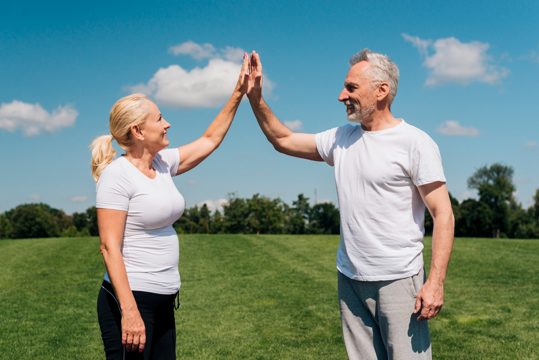
In this way, older adults can harness the power of exercise to foster a positive and proactive mindset, ultimately leading to a more balanced and joyful life. Importantly, the benefits of an active lifestyle extend to the prevention of severe health conditions.
Daily physical activity can be a strong line of defense against life-threatening diseases such as heart disease and stroke, which are prevalent among older adults. By incorporating exercise into their daily routine, older adults can boost their cardiovascular health, strengthen their immune system, and enhance their overall resilience. Therefore, it is strongly recommended for older adults to weave some form of physical activity into the fabric of their daily lives. By choosing a healthier lifestyle, they can not only add years to their life but also life to their years, leading to improved overall health and well-being.
Daily Physical Activity: A Must for Older Adults
Physical activity should not be an optional part of an older adults routine. It is advised to aim to be physically active every day.
Even light activity can make a significant difference and contribute to a healthier lifestyle. Physical activity, without a doubt, should be viewed as an essential and integral part of an older adult's daily routine, rather than an optional extra. It's not merely a suggestion, but a strongly recommended lifestyle choice that has far-reaching benefits beyond simple fitness. As we age, maintaining physical health becomes even more critical to our overall wellbeing. Health experts universally advise that older adults should strive to incorporate physical activity into their schedule each day. This could be anything from a brisk walk in the park to light housework. The vital element is to keep moving, keep active, and keep the body engaged. This doesn't necessarily mean running marathons or lifting heavy weights.
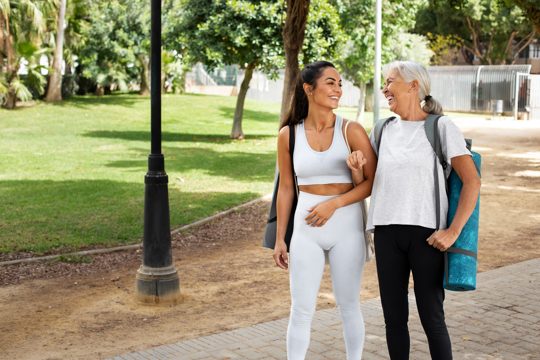
Even light, consistent activities can have extraordinary effects on an older adult's health, helping to improve cardiovascular fitness, maintain healthy body weight, and even enhance mental wellbeing. The simple act of moving more can significantly contribute to a healthier, more vibrant lifestyle.
It can help to reduce the risk of chronic diseases, improve balance and coordination, aid in weight management and even boost mood and overall mental health. But the benefits don't stop there. Regular physical activity can also foster a sense of independence, improve sleep, and provide an opportunity for social interaction, whether it's through a group exercise class or a walk with a friend. In conclusion, staying physically active is not just a beneficial choice for older adults, it's a game-changer. It's about more than just maintaining physical health, it's about enhancing quality of life, promoting longevity, and aging healthfully and happily. So, let's not consider exercise as an optional part of the day, but rather, let's embrace it as an essential component of a healthy, joyful, and fulfilling lifestyle.
Understanding Moderate Intensity Activity
Moderate intensity activities are those that increase your heart rate and make you breathe faster. These activities could include a brisk walk, cycling on level ground, or water aerobics.
Ideally, older adults should aim for at least 150 minutes of moderate intensity activity a week. Moderate intensity activities are those that not only increase your heart rate but also make you breathe faster, providing the perfect balance of pushing your body to the right extent. These activities are a fantastic way to engage your cardiovascular system and keep your heart healthy, without pushing your body too hard. One of the most popular moderate intensity activities is a brisk walk. This is a simple yet effective way to exercise, and it allows you to enjoy the outdoors, breathe in the fresh air, and even explore your neighborhood. Another fantastic moderate intensity activity is cycling on level ground. This is a great option for those who love the thrill of speed and the feeling of the wind in your hair.
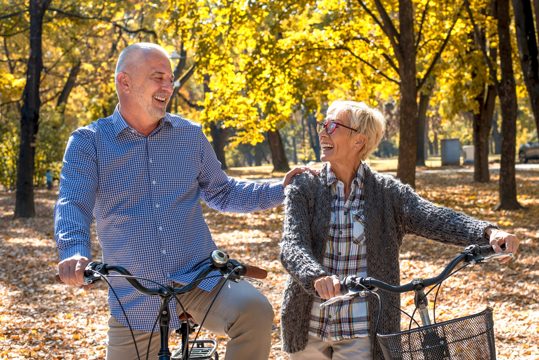
Not only does it provide a great cardiovascular workout, but it also helps to strengthen your leg muscles. For those who prefer water-based activities, water aerobics is an excellent choice.
This combines the benefits of a cardiovascular workout with the resistance provided by the water, helping to strengthen your muscles while being gentle on your joints. As we age, our bodies may not be able to handle high-intensity workouts as they used to, but that doesn't mean we should stop exercising. On the contrary, older adults should aim for at least 150 minutes of moderate intensity activity a week. This might sound like a lot, but when broken down, it's just over 20 minutes a day, which is definitely achievable. Regularly engaging in moderate intensity activities can help keep you active, healthy, and feeling great as you age. So why not lace up your walking shoes, hop on your bike, or dive into the pool and start reaping the benefits of moderate intensity activities today?.
What is Light Activity?
Light activities are those that do not necessarily increase your heart rate significantly but still involve movement. These could include activities like slow walking, light gardening, or household chores.
Light activities, as the name implies, are gentle on the body, but they still encourage physical movement. Think of them as the low-intensity counterparts to those sweat-inducing, heart-pounding exercises you might do at the gym. While they may not substantially elevate your heart rate, they are still beneficial in keeping you active and mobile. Activities such as slow, leisurely walks, perhaps around your neighborhood or a nearby park, fall into this category. Imagine strolling without a rush, taking in the surroundings, and appreciating nature - it's a wonderful way to incorporate light activities into your life. Then there's light gardening, another prime example of a light activity. It's not just about planting and watering; it's about being one with nature, feeling the earth beneath your hands, and nurturing life directly.
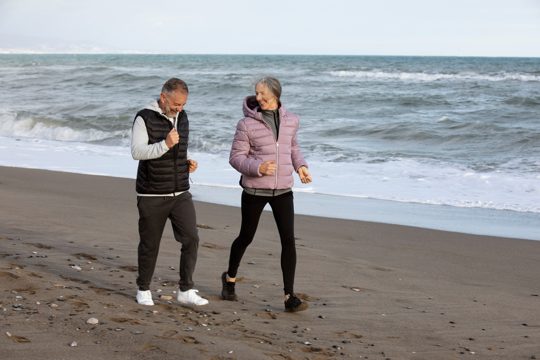
It's a peaceful, calming activity that also serves to beautify your surroundings and give you a sense of accomplishment as you see your plants grow. Finally, consider those household chores that we often overlook.
Yes, they can be mundane, but they are also a great way to keep ourselves moving. Whether it's dusting off the shelves, sweeping the floor, or doing the laundry, these tasks involve physical movement. The best part? You're not only staying active but also maintaining a clean and organized living environment. So, light activities, while not as intense as traditional exercises, still offer valuable ways to keep our bodies in motion. They are perfect for those days when you're not up for a strenuous workout or for individuals who require a gentler form of exercise. They're proof that staying active doesn't always have to mean hitting the gym or running a marathon; sometimes, it's the simple acts of moving and engaging with our surroundings that can contribute to our overall health and well-being.
Vigorous Intensity Activity: An Overview
Vigorous intensity activities are those that make you breathe hard and fast, significantly increasing your heart rate. These might include jogging, swimming fast, or riding a bike up a hill.
Older adults should aim for 75 minutes of vigorous intensity activity a week, or a combination of moderate and vigorous activity. Vigorous intensity activities can be thought of as exercises that demand a great deal of energy and effort, causing your heart to pound like a drum and your lungs to gasp for air. These high-impact activities are often characterized by a significant spike in heart rate, pushing your cardiovascular fitness to its limits. They serve as a challenge, not just for your body but also for your mental determination and resilience. Examples of such activities range from a brisk jog in the park, where the wind brushes past your face as you navigate the winding paths, to swimming at a fast pace, where you engage your entire body to glide through the water like a fish. Other examples could include cycling uphill, where every pedal stroke tests your leg strength and endurance against the unyielding slope. These activities are not just exercises but also a way to step out of your comfort zone and test your physical boundaries.
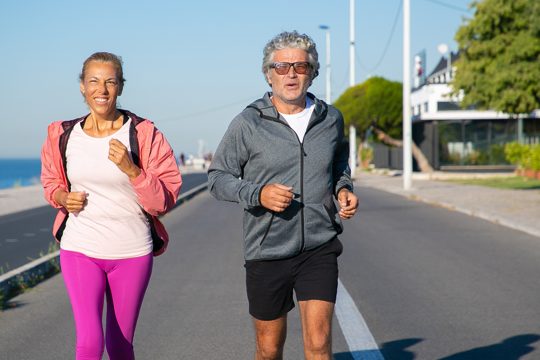
For older adults, the recommendation is to aim for approximately 75 minutes of such vigorous intensity activity per week. This does not mean that all 75 minutes need to be completed in one go.
You can break it up into manageable sessions throughout the week based on your comfort and convenience. Alternatively, you could also opt for a combination of moderate and vigorous intensity activities. This could involve a mix of brisk walking, gardening, or dance classes along with the more strenuous exercises like jogging or swimming. The idea is to maintain a balance that allows for effective fitness growth without overstraining the body. Keep in mind, though, that any exercise regimen should be complemented with a balanced diet and adequate rest to ensure overall well-being.
Activities to Strengthen Muscles
Activities that strengthen muscles include those that work all the major muscle groups of the body: legs, hips, back, abdomen, chest, shoulders, and arms. Examples include weight lifting, yoga, and doing exercises that use your own body weight like push-ups and sit-ups.
Activities that bolster the body's power center, those that encompass all the major muscle groups of your body, such as legs, hips, back, abdomen, chest, shoulders, and arms, are essential to a comprehensive fitness regime. These strength training exercises not only enhance muscle tone but also increase endurance and boost metabolism, leading to a healthier, more energetic lifestyle. Take for instance, the classic activity of weight lifting. This isn't just a pursuit of bodybuilders and gym enthusiasts. It's a versatile activity that can be tailored to fit any fitness level. Whether you're hoisting barbells, kettlebells, or dumbbells, weight lifting helps to hone your focus and determination, while sculpting and strengthening your muscles. The beauty of this activity is that it can be as challenging and varied as you make it, offering endless possibilities for growth and improvement. In the realm of flexibility and strength, yoga reigns supreme. This ancient practice engages your entire body, promoting balance, flexibility, and peace of mind.
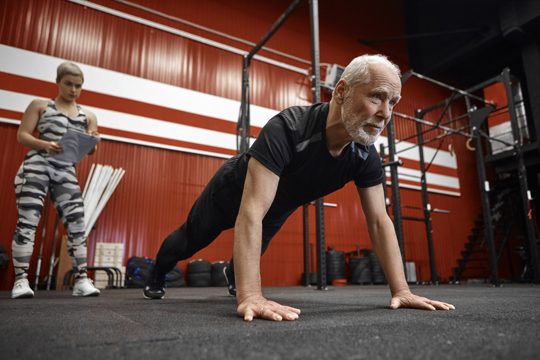
Yoga poses, or asanas, stretch and strengthen various muscle groups, fostering a sense of harmony between mind and body. Far from just a physical workout, yoga also offers a mental workout, teaching you to find calm and focus amidst the chaos of everyday life.
Additionally, exercises using your own body weight, such as push-ups and sit-ups, provide a convenient and effective way to build strength. These exercises require no special equipment or gym membership, and can be performed anywhere at any time. They serve as a testament to the adage that sometimes, the simplest methods are the best. Push-ups, sit-ups, and their myriad variations target multiple muscle groups, promoting functional strength and endurance that benefit everyday movements and tasks. In conclusion, strength training isn't limited to a single activity or exercise. It's a diverse and dynamic field with something to offer everyone, regardless of age or fitness level. Incorporating activities like weight lifting, yoga, and body weight exercises into your routine can bring about a host of physical and mental benefits, paving the way for a stronger, healthier, and more vibrant you.
Balance and Flexibility Activities
Balance and flexibility activities are also important for older adults, as they can help prevent falls and improve mobility. These might include yoga, tai chi, or simple stretching exercises.
In addition to strength and endurance training, it's crucial for older adults not to overlook the significance of balance and flexibility exercises. These types of activities are essential as they play a pivotal role in preventing potential falls, a common concern for seniors, and in improving overall mobility, thus enhancing their quality of life. Activities that can boost balance and flexibility range from traditional exercises such as yoga, known for its contribution to flexibility, balance, and peace of mind, to tai chi, a gentle form of martial arts that combines deep breathing and relaxation techniques with slow, deliberate movements. Other options may include simple stretching exercises, which are not only easy to do but can also significantly improve one's flexibility and joint health. Beyond their physical benefits, these activities also promote mental well-being.
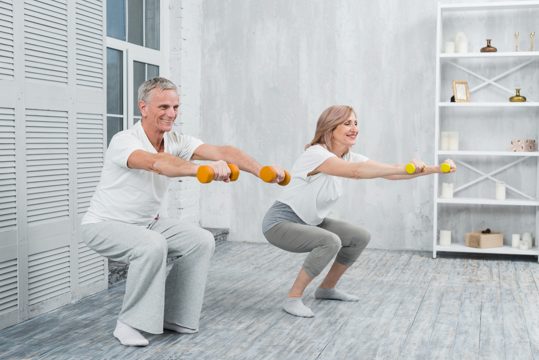
Engaging in such exercises can offer a sense of calm and relaxation, reducing stress and anxiety levels. They also present an opportunity to socialize when done in community classes or groups, which can further enhance emotional well-being.
Moreover, it's never too late to start these exercises. Regardless of age or fitness level, older adults can gradually incorporate these activities into their routines and adapt them based on their comfort and capability. So, for a healthier and more active lifestyle, it's essential to embrace balance and flexibility exercises, enhancing not only physical agility but also promoting mental and emotional health.
Physical Activity and Mental Health
Physical activity is not only beneficial for physical health, but also for mental well-being. Regular exercise can help reduce the risk of depression and cognitive decline.
Physical activity, in all its diverse forms and manifestations, serves as a potent elixir, not only enhancing our physical health but also significantly contributing to our mental well-being. The benefits of consistent exercise extend far beyond the merely superficial, profoundly impacting our mental resilience, and fortifying our minds in the battle against the invisible enemies of depression and cognitive decline. Regular exercise, in fact, can be seen as a dynamic force, capable of reducing the risk of these debilitating conditions. It does this by releasing endorphins, our body's natural mood boosters, which helps to combat the feelings of sadness, anxiety, and stress that often precede depression. Furthermore, exercise, particularly aerobic activities, stimulates the growth of new brain cells, which can be instrumental in preventing cognitive decline as we age.
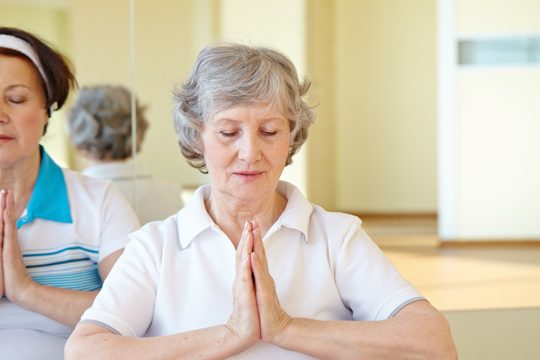
Not only that, but steady physical activity also plays a crucial role in maintaining a healthy sleep cycle, reducing anxiety, and improving self-esteem. It acts as a natural antidote to stress, creating a sense of calm and well-being that can make us more resilient in the face of life's challenges.
So, in essence, exercise isn't just about building muscles and losing weight. It's an all-encompassing lifestyle choice that brings positive changes to every aspect of our lives, from the physical to the mental, ensuring a healthier, happier existence. So, let's make a commitment to stay active and enjoy the myriad benefits that regular physical activity can offer.
Safety Precautions during Physical Activities
While engaging in physical activity, older adults should take certain precautions. These include warming up before starting, cooling down afterwards, and avoiding activities that cause pain or discomfort.
As they engage in physical activities, older adults need to be particularly mindful of certain precautions to ensure their safety and overall well-being. The first and foremost step is a proper warm-up routine. This isn't just a quick stretch or a brisk walk but should be a thorough routine that prepares the body for the task ahead. It's about gradually increasing the heart rate, warming up the muscles, and getting the joints ready for the movement. This is crucial to prevent any undue strain or injury. After a good physical workout, it's equally important to cool down. This process allows the body to gradually return to its normal state, reducing the risk of dizziness or fainting.
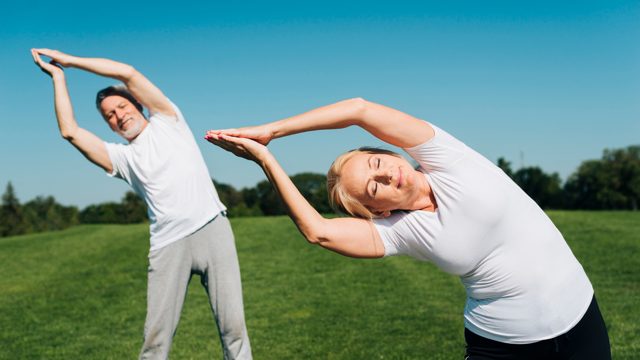
It's not about abruptly stopping the activity; instead, it involves slowly bringing down the pace, followed by stretching exercises to alleviate muscle tension. This process aids in recovery and prepares the body for the next workout session with lesser fatigue.
In the pursuit of staying active, older adults should also be aware of their limitations. It's essential to listen to the body and avoid activities that cause pain or discomfort. This doesn't mean shying away from physical activity altogether, but rather, finding suitable alternatives that don't cause harm. For instance, if running causes knee pain, switching to lower-impact activities like swimming or cycling could be beneficial. This way, they can still reap the benefits of physical activity without compromising their comfort and safety. In conclusion, while it's important for older adults to stay physically active, taking the necessary precautions like warming up properly, cooling down post-workouts, and avoiding discomfort-causing activities can make the experience more beneficial, safe, and enjoyable.
The Role of a Healthy Diet
A balanced diet goes hand in hand with regular physical activity. A diet rich in fruits, vegetables, whole grains, and lean proteins can provide the necessary energy for physical activity and aid in recovery after exercise.
Indeed, a balanced diet and regular physical activity are the two indispensable pillars of a healthy lifestyle. They coexist in harmonious synergy, each enhancing the other's positive impacts on our body. A diet that is brimming with the vibrant colors of fruits and vegetables, the wholesome goodness of whole grains, and the power-packed benefits of lean proteins is not merely a source of sustenance; it's the fuel that powers our every move, our every stride, and our every leap. The rich array of nutrients found in these food categories transforms into energy, giving us the vigor and vitality needed to engage in regular physical activity, be it a morning jog in the park, an intense workout at the gym, or a leisurely evening walk around the neighborhood. But their role is not confined to just providing energy.

These nutrients also play a crucial role in post-exercise recovery, helping repair the wear and tear of muscles, replenishing lost electrolytes, and restoring the body's energy reserves. So, let's make a conscious effort to incorporate a diverse range of fruits, vegetables, whole grains, and lean proteins in our daily diet.
Let's make it a point to engage in regular physical activity, tailored according to our body's needs and capabilities. Because when these two elements come together, they create a perfect synergy for a healthier, happier, and more active life. That's the true power of a balanced diet and regular physical activity.
Importance of Hydration
Staying hydrated is also essential, particularly when engaging in physical activities. Drink plenty of water before, during, and after exercise to prevent dehydration.
Keeping oneself well-hydrated is not just necessary, it's absolutely crucial, especially when you're involved in any form of physical activity - be it a high-intensity workout, a relaxed yoga session, or even a brisk walk in the park. The importance of hydration cannot be stressed enough. It's like oil to a machine, without it, the machine just won't work efficiently, and our bodies are no different. Don't wait till you feel thirsty to reach for a glass of water. Instead, make it a habit to sip on water continuously, before, during, and after your exercise regime. Ensure you are consuming a sufficient amount of water throughout the day, not just around your workout schedule.
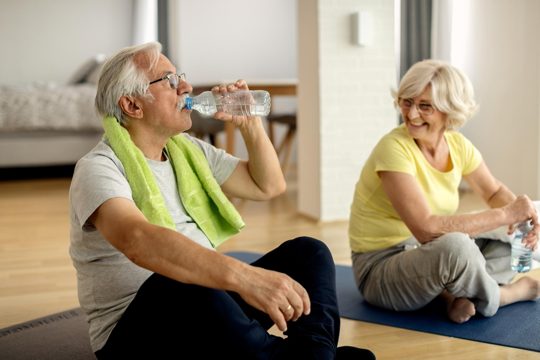
This constant intake of H20 will aid in maintaining a healthy balance of body fluids, regulating body temperature, and facilitating other critical bodily functions. If you're sweating profusely post a workout, you're not just losing water, but also key electrolytes that are essential for your body.
In such situations, consider replenishing your body with hydrating beverages that contain these essential electrolytes. Remaining hydrated will not only prevent dehydration and help maintain your performance, but it also aids in the recovery process after a strenuous workout. In other words, the strategy to healthy living and optimum physical performance doesn't begin and end at the gym or running track. It's a 24/7 process and water, the elixir of life, plays a significant role in it. So, always remember to drink up and stay hydrated!.
Consulting a Healthcare Professional
Before starting any new exercise program, its important to consult with a healthcare professional. They can provide personalized advice based on an individuals health status and fitness level.
Embarking on any new fitness journey, it's of paramount importance to secure the guidance of a healthcare professional. This is not just a casual suggestion, but rather a vital step that can make the difference between a successful, health-boosting fitness endeavor and one that could potentially harm you. They have the expertise to offer personalized advice tailored to your unique health status and fitness level, ensuring that your new exercise program is not only challenging but also safe and sustainable. A healthcare professional can provide a comprehensive overview of what your body can handle and how far it can be pushed, preventing any unwelcome strain or injury. They can also help you identify any pre-existing conditions that may affect your ability to exercise and guide you in modifying your workout regime accordingly.

Furthermore, they can help you set realistic fitness goals, keeping your motivation high and your progress steady. Moreover, they can monitor your progress and make necessary adjustments to your program, allowing you to maximize your results while minimizing the risk of injury.
Their expertise can help you understand the importance of rest and recovery, nutrition, and how to listen to your body's signals effectively. They can also provide invaluable advice on incorporating physical activity into your lifestyle in a balanced, enjoyable, and healthy way. So, before lacing up your trainers and diving headfirst into a new exercise program, remember to consult with a healthcare professional. It's a simple step that can have a profound impact on your fitness journey, paving the way for a healthier, fitter you.
Conclusion
Overall, regular physical activity, whether light, moderate or vigorous, plays a crucial role in maintaining the health and well-being of older adults. Its never too late to start and reap the benefits of exercise.
Undoubtedly, consistent physical activity, regardless of the intensity level - be it light, moderate, or vigorous, serves as a cornerstone in preserving the health and improving the quality of life of older adults. It's a universal truth that our bodies inherently crave movement, and this need doesn't diminish with age. In fact, it becomes even more critical as we grow older. The beauty of physical activity is that it doesn't discriminate based on age. Whether you're in your golden years, or just starting your journey into adulthood, you can begin at any time. Remember, it's never too late to get started, and the benefits you'll reap from exercise go beyond just physical health.
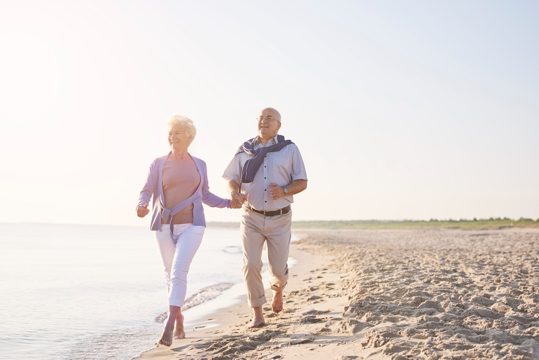
Regular exercise not only contributes to cardiovascular health, improved muscle strength, and better balance, but it also boosts one's mood, increases mental alertness, and can even serve as a social activity if you choose to participate in group exercises. The path to fitness is a journey, not a race, and every step you take is a step towards a healthier, happier you.
So encourage your loved ones to take that first step, or if you’re an older adult, make the decision today. Start slow, listen to your body, and gradually increase your activity level. The important thing is to stay consistent and make it a lifelong commitment. The power of exercise is truly transformative; it can slow the aging process, enhance one's vitality, and most importantly, it can add life to your years. So why wait? Embrace the benefits of physical activity today and enjoy the rewards for years to come.
About us
Welcome to SeniorCaresHub! Welcome to our comprehensive senior care destination! We pride ourselves on being a trusted resource for all things related to caring for aging loved ones. We understand the unique needs and challenges that come with senior care, and our mission is to provide you with the information, resources, and support you need to confidently navigate this journey and help you provide the best possible care for your aging loved one.

